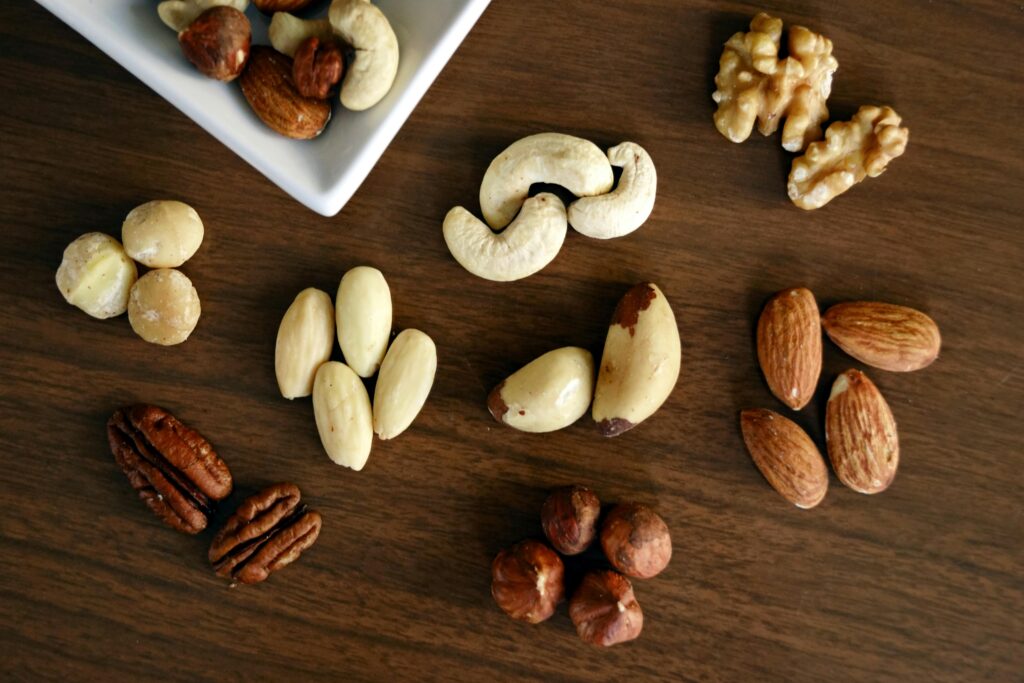
Saturated vs Unsaturated Fats
Saturated Fats are saturated because of their chemical structure – they have the greatest number of hydrogen atoms possible and no double bonds, making them solid at room temperature. Saturated fat tends to be in animal meat, plant/seed oils, dairy products, and processed foods. The American Heart Association(AHA) recommends limiting your saturated fat intake to 6% of your daily caloric intake because consuming a high amount has been linked to increased LDL(Bad Cholesterol)which has been shown to increase the risk for heart disease. However, some studies have stated that there is no association between saturated fat and cholesterol. For example, small dense LDl is shown to contribute to atherosclerosis, the buildup of plaque in your arteries, but saturated fat doesn’t raise small dense LDl. The type of saturated fat you eat does matter though. Consuming dairy products is a safe choice but processed meats are a no-go.
Unsaturated fats are fats that are liquid at room temperature. Their chemical structure differs from saturated fats because they have one or more double bonds. There are two types of unsaturated fats – Monounsaturated and Polyunsaturated Fats. Both fats have been shown to reduce harmful LDL cholesterol levels and provide nutrients that your cells use to develop. Consuming more monounsaturated and polyunsaturated fats also lowers the level of bad cholesterol and triglycerides( lipids that are stored and circulated in the bloodstream). They also provide fatty acids which are essential to your health. Eating more of these fats benefits heart health and controls blood sugar better. The American Heart Association (AHA) recommends that 20-35% of your daily caloric intake should be fat and that most of that should come from unsaturated fats.
Monosaturated fats are in olive oils, avocados, nuts, and seeds
Polyunsaturated can be divided into two types of fats: Omega-3 and Omega-6 Fatty Acids
Omega-3 Fatty Acids are found in fatty fish, seeds, nuts, soybeans, and more. Omega-6 fatty acids are found in many different oils.
Trans Fat
Trans fat is a fat that raises bad cholesterol and lowers good cholesterol. They occur in very small amounts naturally, usually in meats and dairy. Most trans fats however are chemically changed to become solid fats and occur in processed food, fried foods, and other commercially baked foods. They are not used in U.S. food production, but other countries still use them.
Summary
Saturated fats increase bad cholesterol levels, and unsaturated fats decrease bad cholesterol levels and increase good cholesterol levels. Most of your fat intake should come from unsaturated fats but saturated fats can still be consumed, specifically from dairy or meat products, not processed foods. To reduce unhealthy fat consumption you should use plant-based oils instead of butter and seed oils, limit processed foods, add more fish and lean meat to your diet, eat more fruits and veggies, and eat/drink more low-fat dairy.
References
https://www.healthline.com/health/food-nutrition/saturated-and-unsaturated-fat#tips-and-tricks
https://www.mayoclinic.org/healthy-lifestyle/nutrition-and-healthy-eating/in-depth/fat/art-20045550
https://www.verywellhealth.com/difference-between-saturated-fats-and-unsaturated-fats-697517
https://www.heart.org/en/healthy-living/healthy-eating/eat-smart/fats/saturated-fats
https://www.verywellhealth.com/monounsaturated-and-polyunsaturated-fats-differences-697740